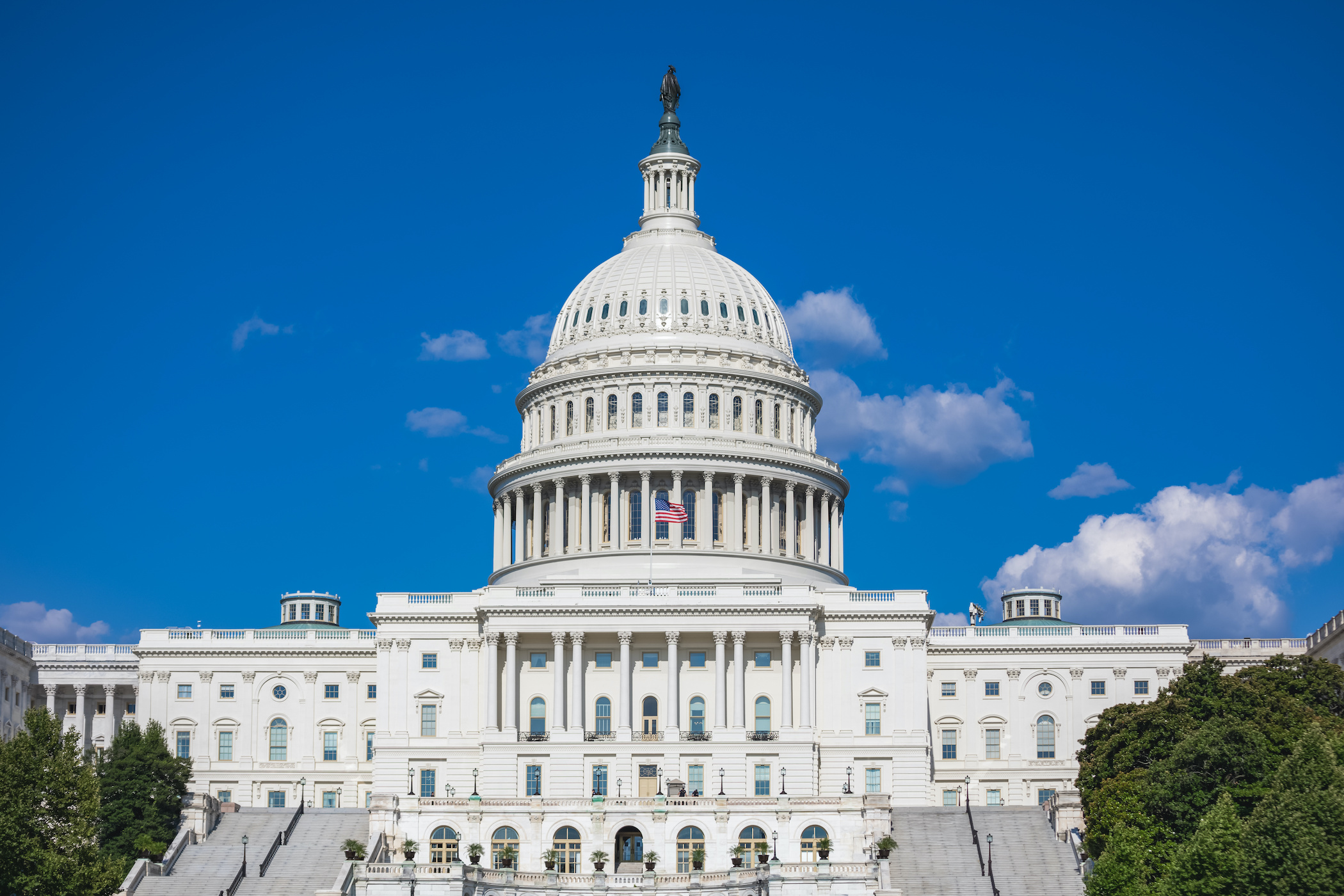The Founding Fathers' desire to create a new form of government that prohibited those in power from violating the rights of individual citizens led to the writing of the Constitution of the United States. In addition to a federal system of governance, the Constitution grants individual states the right to govern themselves in certain matters. By developing a method of checks and balances, the writers of the Constitution devised the legal system that is used today.
- Constitutional Principles: The guiding principles behind the Constitution.
- Overview of the Legal System: Discussion of the different branches of government.
- The Constitution of the United States: Why it was written, transcripts, and an image of the original document.
- A Guide to the U.S. Federal Legal System: Web-based resource guide.
- The Constitution of the United States: Includes the preamble, all articles, and amendments.
The Federal System
The Constitution outlines the responsibility of the national government in governing the nation. National powers include: creating and maintaining armed forces, declaring war, printing money, regulating immigration, establishing foreign policy, and regulating interstate and international commerce.
To prevent tyrannical rule, the framers of the Constitution constructed a system of governmental checks and balances using three branches. The Legislative Branch, Congress, is responsible for making laws. The Executive Branch, the Presidency, is responsible for enforcing the laws and the Judicial Branch, or Federal Courts, interprets the law. Each Branch is checked by another branch. For example, Congress has the power to impeach a president while the President has the power to veto new legislation. The courts have the ability to declare Congressional or Presidential laws unconstitutional. This method of checks and balances provides the means to keep a single government branch from becoming too powerful.
- The Jurisdiction of Federal Courts: Explains which cases are under the federal court jurisdiction.
- The Judicial Branch: How the court system interprets the Constitution.
- Checks and Balances: Diagram outlining the different ways each government branch is checked.
- The Judicial Branch: Overview and list of resources.
- Legislative Branch: Long list of resources including laws, reports, and members.
The State Law System
All powers not granted to the federal government are granted to individual states. While states have their own constitutions and laws, no state law or constitution may conflict with the federal constitution. States have powers that the national government does not. These include: regulating intrastate commerce, establishing local governments, building and maintaining public schools, regulating laws for marriage and professional licenses, and writing corporation laws.
- National versus State Government: What are the differences?
- State and Local Government: An overview of how state and local government works.
- State Constitutions, Statues and Codes: Alphabetical list of state constitutions and laws.
Civil and Criminal Law
There are two types of cases heard in judicial courts. Criminal courts have jurisdiction when a person has been accused of breaking a law.
Civil courts are typically the setting for lawsuits between citizens when no law has been broken. A citizen may determine that another is responsible for a personal injury or monetary loss and seeks to procure some type of remedy within the court system.
- Civil Law and Criminal Law: Understanding the differences.
- Criminal vs. Civil Law: The differences between criminal and civil law.
- What are the Differences?: Outlines the differences between how civil suits and criminal charges are handled.
Common Legal Terms:
- Adjudication: A judgment rendered by the court.
- Claim: a series of allegations as a basis for seeking relief from the court.
- Class Action: A representative asserts the rights of numerous other persons in a lawsuit without having each class member actively participate.
- Common Law - Principles from the written opinions of judges, rather than laws enacted by legislation.
- Defendant: the person against whom a civil complaint or criminal charge has been filed.
- Opinion: Written documentation of a judge or judges when explaining a decision.
- Precedent: A previously decided case that is used to guide the decision of later cases.
- Tort: Varying causes of action in which a plaintiff alleges the defendant caused an injury.
- Legal Glossary: Alphabetical listing of common legal terms
("Legal information found on this page does not constitute legal advice.")
